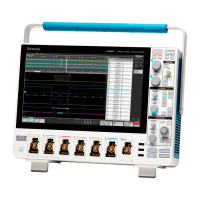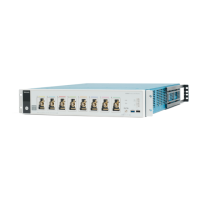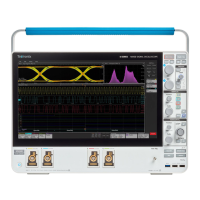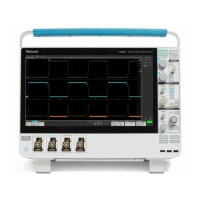Configure channel or waveform settings
Use the channel and waveform configuration menus to set parameters such as vertical scale and of
fset, coupling, bandwidth, probe
settings, deskew values, external attenuation values, and other settings.
Before you begin
Prerequisite: There is a channel or waveform badge in the Settings bar.
Procedure
1. Double-tap a Channel or Waveform badge to open a configuration menu for that item.
For example, in a Channel menu, use the Vertical Settings panel to set basic probe parameters such as vertical scale and position,
offset, coupling, termination, and bandwidth limit. Available settings depend on the probe.
2. T
ap the Probe Setup panel to confirm probe settings and run configuration or compensation on supported probes.
3. T
ap the Help icon on the menu title to open the help topic for more information.
4. Tap outside the menu to close the menu.
Add a math, reference, or bus waveform
Math waveforms let you create new waveforms based on operations between two or more waveforms or by applying equations to
waveform data. A reference waveform is a static waveform record displayed for comparison. Bus waveforms let you view and analyze
serial or parallel data.
There is no set limit to the number of Math, Reference, or Bus waveforms you can add to the Waveform View, other than system physical
memory constraints.
1. Tap the Math Ref Bus > Add New Math, Add New Ref, or Add New Bus button in the Settings bar.
Analog channel operating basics
62
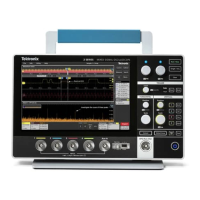
